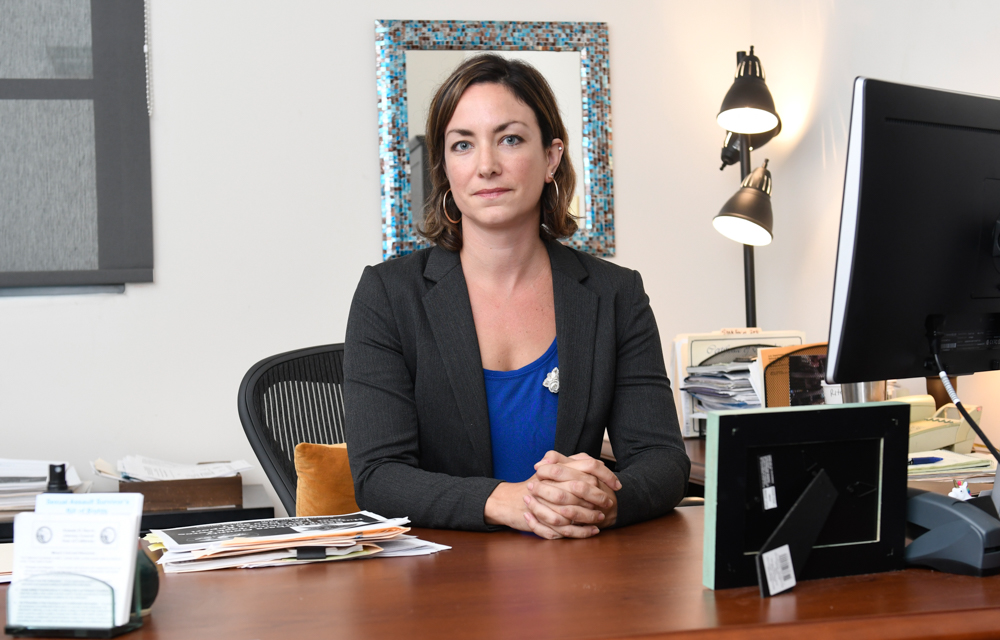
California has the highest number of human trafficking cases in the United States, with San Diego, Los Angeles, and San Francisco labeled by the FBI as cities with high-intensity child sex trafficking. While Santa Barbara isn’t among the top 10, its position along Highway 101 between major cities makes it a “hub” for sex trafficking, according to the agency. A large majority of the victims found in the county are children, so many identified so frequently that a safe house has been created for them.
In 2013, the Santa Barbara County District Attorney’s Office created the Human Trafficking Task Force, and in 2016, they joined forces with the Santa Barbara County Sheriff’s Office to enhance the effort with $1.34 million from the U.S. Department of Justice. As the task force learned more about child sex trafficking and the range of crimes called “commercial sexual exploitation of children,” or CSEC, the problem grew in scope. The difficulty in mapping the scale of the problem is that victims — more than 90 percent are female in the county — do not self-identify. “Even when they know we know, and we have seen pictures of them on [a website] or have a known pimp name on their body, they will still not say, ‘I was exploited,’” said Lisa Conn, supervisor of Santa Barbara County Behavior Wellness Resiliency Interventions for Sexual Exploitation (RISE) Project. “That can be for a number of reasons,” Conn added. “Two big ones are shame and fear.”
“A lot of people being identified [as victims] are getting caught up in crimes,” said Lt. Brian Olmstead, who heads up the task force. Once identified, the kids get placed in Juvenile Hall, where they are screened and flagged as CSEC victims. “The more outreach we do and education we do, the numbers keep getting bigger and bigger,” said Olmstead. Rita McGaw, the District Attorney’s Victim-Witness Program supervisor, is the first point of contact with survivors, connecting them with immediate services. The ultimate goal is to identify and arrest traffickers, but “it’s not at the top of the list,” said McGaw. “First is getting the child back to a place where they’re not traumatized.”
On average, it takes about two years before a victim is located, said Conn. “That’s thousands of rapes before they’re identified — unimaginable.” Yet, the relationships the girls have with their traffickers are complex. “Not only is there a lot of fear at times, there is also a lot of love,” said Jennifer Karapetian, a prosecutor in Santa Maria. “There is a desire to not betray the pimp.” It can appear as if the girl is complicit, said Conn, but as a child, there is no agreement or consent. Traffickers prey on vulnerable children and pose as caring partners who can provide the child with shelter, food, clothes, and love. “[The kids] are being manipulated by master manipulators,” said Conn. They target children who may be having a difficult time at home or are in foster or group homes. On average, victims are entered into trafficking between the ages of 12 and 14.
Once girls are identified, it can take months to gain their trust. During that time, RISE provides services, including showers, meals, and clothes. “These girls are tough,” said Conn. “They’re not whimpering in a corner. They’ve externalized their trauma and are fighting for safety.” Placing them in safe homes is a last resort for Conn, as that, too, can be traumatic. However, only recently did safe homes even become an option in Santa Barbara County — the first one in the county opened in May. S.A.F.E House Santa Barbara is at capacity, with six victims, and has a waiting list, said Kris Hart, head of 4 Kids 2 Kids, which runs the home.
Hart and the house staff have a full schedule for the girls every day, with activities such as surfing and equine therapy. “We throw as much at them as we can so they can know more than drugs, gangs, and trafficking,” said Hart. “They can experience things and learn they can conquer anything.” Each girl has her own program to work on while she’s in the home, and they all learn new coping strategies and how to process emotions. “Progress can look different here,” said resident clinician Briana Laszlo. “We had a girl punch a window, but she didn’t AWOL,” said Laszlo. “That’s progress.” Still, girls are haunted by their traumatic pasts. “There are many night terrors,” said Laszlo. “We have salt lamps and diffusers in every room, and we have fans that provide the girls with white noise — it helps them sleep.”
As of January 2016, RISE has helped more than 100 children who have been exposed to or are at high risk of sexual exploitation. Funded by the Mental Health Services Oversight and Accountability Commission, RISE is the first multidisciplinary program in Santa Barbara County to solely focus on the behavior health needs of victims of sexual exploitation. “We can barely keep up with what is in front of us,” said Conn. “This is not a problem of others,” she said. “These are our kids; 99 percent are from our county, and it’s your neighbors that are buying and purchasing our kids.”
The abusers and pedophiles driving up demand could be anyone, said Olmstead. “They are as young as 18, all the way to 51 years old, and all races and socioeconomic backgrounds — college students, professionals — a total cross-section.”
Editor’s Note: This name of the safe house was corrected to S.A.F.E. House Santa Barbara on August 2.
Editor’s Note: This story was corrected August 3 to clarify that RISE is a specialty unit created by the Santa Barbara County Behavior Wellness Department and funded by the Mental Health Services Oversight and Accountability Commission.



